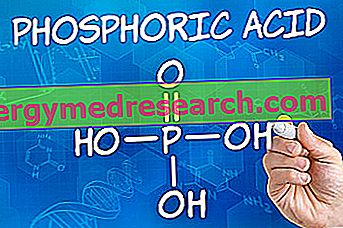What is the choroid?
The choroid is the posterior and most extended portion of the uvea (average vascular cassock). This thin membrane is interposed between the deep face of the sclera (fibrous external layer) and the most superficial layer of the retina (internal nervous layer).
The choroid is a pigmented and extraordinarily vascularized tissue; its main function, in fact, consists in supplying the nutrients and oxygen to most ocular structures.
The choroidal membrane can be the site of inflammatory processes (choroidites), tumors (especially melanomas) and congenital malformative anomalies (absence of the choroid, coloboma, toxoplasma or cytomegalovirus choroiditis acquired in the prenatal period).

Special characters
- The choroidal membrane appears of a dark rust color due to the presence of pigmented cells and the extreme richness of blood vessels.
- The choroid is a very delicate membrane: a blunt trauma of the eyeball can easily tear it, causing a haemorrhagic lesion.
- The thickness of the choroid is not uniform, but it goes from 30-50 µm to 200-300 µm; this variability depends on the structures with which it is related and on the amount of blood circulating in the choroidal vessels.
Relationships with sclera and retina
The choroid is a hollow sphere-shaped membrane, which extends into the two posterior thirds of the eyeball, from the origin of the optic nerve to the serrated hour (anterior edge of the retina), where it borders on the ciliary body.
The outermost portion of the choroidal membrane is related to the sclera through a loose connective tissue, which forms the supracoroidal lamina . The inner face, on the other hand, adheres closely to the most superficial retinal leaflet.
Structure
The choroid is made up of several overlapping layers and between them in continuity.
Proceeding from the surface in depth, we find:
- Suproro-lamina : located at the union with the sclera; it consists of a delicate interweaving of connective lamellae and elastic fibers, which form the supracoroidal space, crossed by vessels and nerves directed towards the ciliary bodies and the iris;
- True vascular layer: it is the fundamental layer of the choroid; it results from the ramifications of the choroid vessels (arteries and veins), with the interposition of a relatively scarce collagenous stroma;
- Choriocapillaris plate : it is formed by arterial and venous capillaries, dense and joined to a net, deputed to the vascularization of the most superficial layers of the retina (without vessels);
- Basal lamina : very thin layer, intimately joined to the choriocapillar lamina; represents the transit line for nutrients (coming from the choriocapillaris and directed to the retina) and the catabolites (which rise from the retina towards the choroid).
Functions
- Nutritive function . The choroid contains an extensive network of blood vessels deriving from the ophthalmic artery, whose main purpose is to send oxygen and other nutrients to the retina.
- Optical function . Together with the pigmented epithelium of the retina, the pigmented cells of the choroid combine to absorb the light rays that reach the back of the eye, preventing their reflection on the scleral surface (a phenomenon that would cause glare and distortions of the visual image).
Choroid diseases
choroiditis
Choroiditis is an inflammation of the choroid caused by infectious agents, traumas or systemic diseases.
The most common symptoms include the perception of loose bodies and reduced vision.
The treatment of choroiditis depends on the cause, but is usually based on the use of topical corticosteroids or injected intraocularly, associated with a cycloplegic-mydriatic drug. This approach helps reduce inflammation and prevents the involvement of the front of the eye. On the other hand, serious and refractory cases may require the use of corticosteroids or systemic immunosuppressants. Infectious choroidites need specific antimicrobial therapy.
Coloboma of the choroid
The coloboma of the choroid is a congenital malformation caused by failure to close the optical fissure, a transient structure present during the development of the eye. This defect causes mainly low vision and scotomas.
There are no surgical procedures able to correct a coloboma; however, the use of glasses can help improve visual acuity.
Choroidal dystrophies
Choroidal dystrophies are a heterogeneous group of genetically determined pathologies characterized by progressive degeneration of the choroid, pigment epithelium and retina. The symptomatology consists essentially in visual disturbances in conditions of darkness (nictalopia and emeralopia), reduction of the visual field and peripheral scotomas (blind areas); only in the terminal phases does a decline in central vision occur, which can culminate in blindness.
The most frequent choroidal dystrophies are choroidemia and turned atrophy.
Choroideremia (denuded choroid)
Choroideremia is a genetic disease transmitted with X-linked recessive modality (ie the mutated gene that determines the pathology is on the X chromosome). Thus, males are generally affected (note: men are susceptible to X-linked diseases because they possess only one X chromosome paired with a Y chromosome). Choroideremia is a form of diffuse choroidal dystrophy that depends, in particular, on mutations of the CHM gene located on the X chromosome, which codes for the REP-1 and REP-2 (Rab escort protein) proteins. This involves the progressive degeneration of the pigment epithelium and the choroidal capillaries.
Generally, patients begin to experience the first symptoms of choroideremia around the age of 40. The disease causes nictalopia, progressive narrowing of the peripheral visual field, scotomas and deficits in visual acuity. Unfortunately, there is currently no therapy capable of effectively halting the progression of choroideremia.
Atrophy of the choroid
Turned-up atrophy is an inherited chorioretinal dystrophy that affects the choroid and retina. It is transmitted in an autosomal recessive manner (ie both parents carry mutations, so each child of the couple has a 25% chance of being sick). Turned atrophy is associated with the mutation of the gene that codes for the enzyme ornithine-aminotransferase, involved in the degradation of the amino acid ornithine. From this, hyperornithinemia follows, a condition that causes irreversible damage to structures of the eye such as the choroid and retina.
In general, the symptoms of the atrophy of the choroid occur around 20-30 years with nictalopia, axial myopia and peripheral reduction of the visual field. Blindness is mainly due to the pathological involvement of the macula.
The therapy involves the normalization of the urinary and plasmatic levels of ornithine through the administration of pyridoxine (vitamin B6) and the decrease in the intake of arginine through the diet. However, it should be noted that the effectiveness of this approach in slowing the progression of the disease varies from patient to patient.
Melanoma of the choroid
Choroid melanoma is the most common primary intraocular malignant tumor in adults.
Sometimes, it develops without specific symptoms; however, if located near the fovea (central area of the retina), it can lead to a reduction in visual acuity, phosphenes (flashes of light, sometimes colored) and metamorphopsia (distorted vision). Other symptoms include visual field deficits attributable to retinal detachment.
The diagnosis of choroid melanoma is based on the examination of the ocular fundus, integrated, when indicated, by other tests, such as fluorangiography, bulbar ultrasound and CT.
Therapeutic intervention depends on the location and size of the tumor. Small neoplasms are treated with laser or radiotherapy, in order to preserve the visual function and save the eye. Rarely, local resection is performed. Large tumors, on the other hand, require enucleation, ie the removal of the entire eyeball.



